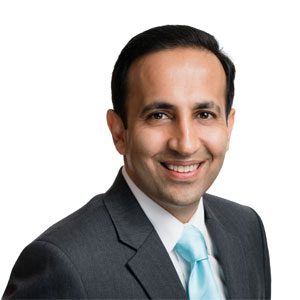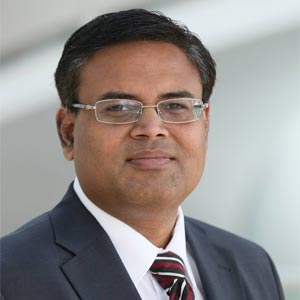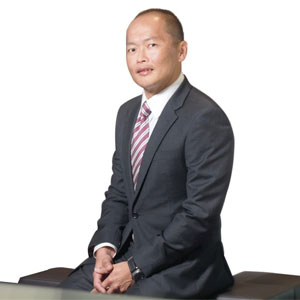THANK YOU FOR SUBSCRIBING

Tech Innovation in Life Sciences: Be Leading Edge, Not Bleeding Edge
Amit Backliwal, Vice President, Technology & Services, Iqvia Asia Pacific and Jonathan Foster, Practice Leader for Technology Solutions, Iqvia Asia Pacific


Amit Backliwal, Vice President, Technology & Services, Iqvia Asia Pacific
These are exciting times to be involved in technology in the life sciences. Biopharmaceutical and healthcare companies—traditionally conservative—are scrambling to adopt information technology solutions to address long-standing challenges.
Technology advancement is one of the top two reasons that Asia Pacific healthcare will transform over the next three to five years, according to a recent IQVIA survey of senior biopharma and healthcare leaders in the region. Forty five percent of respondents named technology as the top driver of change, slightly less than the 48 percent who identified “public funding cost containment” as number one.
The industry is being forced to change because of a confluence of factors: increased regulatory pressure on drug prices; soaring costs of discovery and development (without a corresponding increase in products approved); fewer “blockbuster” drugs and more targeted specialty therapies; and a rapidly changing stakeholder environment, to name a few. This has created a perfect storm that requires innovative approaches to solve intractable problems.
Fortunately, the proliferation of new technology is providing multiple opportunities to mitigate these challenges.
Which business functions will most benefit from tech innovation? Respondents to our survey called out three: Research and Development (R&D), Marketing, and Business Intelligence.
R&D. Typically the largest single cost for biopharma, companies are rapidly adopting big data, artificial intelligence and digital enablement. Wearable devices, remote sensors, mobile apps and other disruptive technologies are dramatically affecting the landscape by increasing the speed and effectiveness of clinical trials and patient recruitment, driving to the end goal of bringing innovative targeted drugs to market more quickly.
We estimate that more than 318,000 healthcare apps are already available worldwide, with 200 being added each day. Asia Pacific has an estimated 30 percent share of this market and is the fastest-growing region in terms of adoption of mobile health apps and wearable sensors.
Marketing. The traditional model of sales reps calling on doctors face-to-face has long been on the decline in Western markets as well as the more mature Asia Pacific markets, such as Australia, New Zealand and Japan. The fragmented and developing nature of many other markets in the region means they have always been hungry for a different engagement model.
 Jonathan Foster, Practice Leader for Technology Solutions, Iqvia Asia Pacific
Jonathan Foster, Practice Leader for Technology Solutions, Iqvia Asia Pacific
Healthcare professionals (HCPs) worldwide are demanding new and more insightful ways to gain information about pharma companies’ products; HCPs as well as patients and consumers are now expecting to be able to use their everyday social media platforms to access more and more material to inform their respective healthcare choices. This is forcing marketing teams to deploy multiple new methods and use different engagement models—whether it’s to identify the right patients and HCPs through AI/Machine Learning, or to serve the right information to their ever-increasing stakeholders through portals, all rallying around the overwhelming need for “patient centricity.” Digital technologies are now able to provide the collaboration, interaction and insights that are required within a healthcare company to ensure that their customers receive the best possible integrated experience.
No industry is immune from the transformational changes being wrought by technology and big data, from farming to retail to the life sciences
Business intelligence. The proliferation of data, be it from electronic medical record systems, genetic databases, clinical trials or social media, is creating a need to harness the power of this information like never before. Payers, providers and patients are hungry for evidence-based, real-world insights to demonstrate the value of therapies. This can only be achieved by collecting, processing, managing and interpreting vast amounts of data.
IQVIA alone has one of the largest and most comprehensive collections of healthcare information in the world—about 30 petabytes of proprietary data sourced from more than 120,000 data suppliers. Yet we are only one part of this vast global healthcare data landscape. In Asia Pacific, this challenge is compounded by the fragmented nature of the available data; it takes a high level of expertise to make the data assets useable. Likewise, just managing such enormous quantities of data is unfortunately not enough. It takes all forms of artificial intelligence and machine learning to realize its full value. Decision makers are no longer satisfied with historical key performance indicators but are looking for predictive analytics to gain that all important competitive advantage.
No industry is immune from the transformational changes being wrought by technology and big data, from farming to retail to the life science. Compared to many industries, though, the life-science and biopharma sectors are still playing catch-up.
The core technology platforms and capabilities (big data, cloud, mobile, digital) represent powerful tools for biopharma and healthcare companies to transform. They come with risks— but manageable ones. Technology can vastly improve efficiency and yield insights to drive healthcare forward. At the same time the vast array data sources, direct-to-patient applications, countless health portals, etc. must still fit within the well-established and overarching framework of safety, regulation and ethical behavior.
This dynamic is why this is such an exciting time for our industry and will require particularly strong leadership to achieve the required balance of risk and reward.
Weekly Brief
I agree We use cookies on this website to enhance your user experience. By clicking any link on this page you are giving your consent for us to set cookies. More info
Read Also













